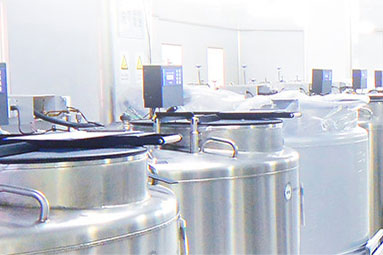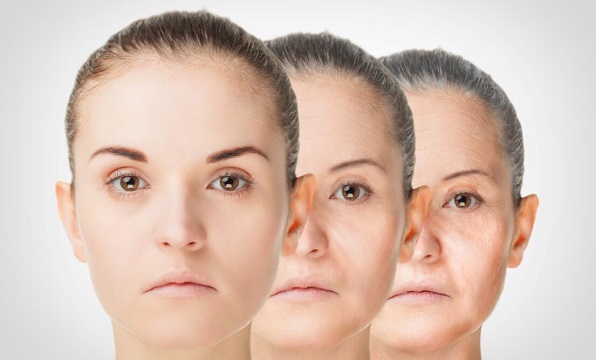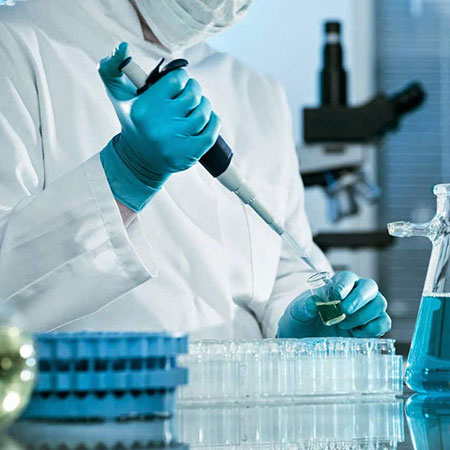- Email:[email protected]
- Tel: (852)51044851
-
Directed Conversion of Alzheimer’s Disease Patient Skin Fibroblasts into Functional Neurons
Liang Qiang, Ryousuke Fujita, Toru Yamashita, Sergio Angulo, Herve Rhinn, David Rhee, Claudia Doege, Lily Chau, Laetitia Aubry, William B. Vanti, Herman Moreno, Asa Abeliovich Directed conversion of mature human cells, as from fibroblasts to neurons, is of potential clinical utility for neurological disease modeling as well as cell therapeutics. Here, we describe the efficient generation of human-induced neuronal (hiN) cells from adult skin fibroblasts of unaffected individuals and Alzheimer’s patients, using virally transduced transcription regulators and extrinsic support factors. hiN cells from unaffected individuals display morphological, electrophysiological, and gene expression profiles that typify glutamatergic forebrain neurons and are competent to integrate functionally into the rodent CNS. hiN cells from familial Alzheimer disease (FAD) patients with presenilin-1 or -2 mutations exhibit altered processing and localization of amyloid precursor protein (APP) and increased production of Aβ, relative to the source patient fibroblasts or hiN cells from unaffected individuals. Together, our findings demonstrate directed conversion of human fibroblasts to a neuronalphenotype and reveal cell type-selective pathology in hiN cells derived from FAD patients.
[Read More] -
Generation of human vascular smooth muscle subtypes provides insight into embryological origin–dependent disease susceptibility
Christine Cheung, Andreia S Bernardo, Matthew W B Trotter, Roger A Pedersen & Sanjay Sinha Abstract:Heterogeneity of embryological origins is a hallmark of vascular smooth muscle cells (SMCs) and may influence the development of vascular disease. Differentiation of human pluripotent stem cells (hPSCs) into developmental origin–specific SMC subtypes remains elusive. Here we describe a chemically defined protocol in which hPSCs were initially induced to form neuroectoderm, lateral plate mesoderm or paraxial mesoderm. These intermediate populations were further differentiated toward SMCs (>80% MYH11+ and ACTA2+), which displayed contractile ability in response to vasoconstrictors and invested perivascular regions in vivo. Derived SMC subtypes recapitulated the unique proliferative and secretory responses to cytokines previously documented in studies using aortic SMCs of distinct origins. Notably, this system predicted increased extracellular matrix degradation by SMCs derived from lateral plate mesoderm, which was confirmed using rat aortic SMCs from corresponding origins. This differentiation approach will have broad applications in modeling origin-dependent disease susceptibility and in developing bioengineered vascular grafts for regenerative medicine.
[Read More] -
Stem cells responsible for ‘thinking’ brain cells identified
Scientists have identified a sub-type of stem cell responsible for neuron development within the cerebral cortex associated with higher-level brain function. A recent publication in the journal Science suggests these cells may have been important in the evolution of the human brain and could boost our understanding of advanced cognition in humans. Previously all cortical neurons were thought to originate from the same class of stem cells, known as radial glial cells (RGCs). However, the study revealed a distinct population of RGCs in mice embryos that gave rise to upper layer neurons in the outer region of the brain, which is where higher thinking functions are located. The upper layer is also believed to be the ‘newest’ in evolutionary terms. ‘Advanced functions like consciousness, thought, and creativity require a lot of different neuronal cell types and a central question has been how all this diversity is produced in the cortex’, said Dr Santos Franco of the Scripps Research Institute, California and first author of the paper. ‘Our study shows this diversity already exists in the progenitor cells’. The development process of upper layer neurons was traced in a specially engineered line of mice. A marker gene, Cux2, known to be expressed only by upper layer neurons, was linked to a series of genes which glow fluorescent red when activated. The scientists could monitor the cells expressing Cux2 under the microscope, observing that even at the earliest time point in embryonic brain development, the cells almost exclusively generated upper layer neurons. Meanwhile, the subgroup of RGCs not expressing Cux2 became lower layer neurons. The authors conclude that the specific fate of cortical neurons is pre-determined independent of birth date or location. Upper layer cortical neurons are especially abundant in the human brain and these stem cells could in future help provide treatments for disorders such as schizophrenia and autism. ‘This opens a door now to try to make these neurons, which are frequently affected in psychiatric disorders’, said Professor Ulrich Mueller who led the research team. But Professor Uta Frith of University College London’s Institute of Cognitive Neuroscience, told the New Scientist: ‘There is still a chasm between neuro-cognitive explanations of autistic symptoms and mechanisms in terms of cell structure. To put these two levels of explanation together is a big task’. Reference:http://www.bionews.org.uk/page_167457.asp
[Read More] -
Stem cell therapy combined with liposuction may help burns victims
An experimental procedure which combines stem cell therapy with liposuction could have major implications for burns victims. The procedure has been approved in the UK and was used on Glasgow resident Lesley Kelly last year. The 45-year-old sustained third-degree burns after falling into a bath at the age of two, which left her with limited movement as a result of damage to her joints, and considerable scaring. Last year, in a procedure that lasted just two hours, doctors used stem cells from Lesley’s fat tissue to repair the build-up of scarring around her right elbow. Liposuction was used to take fat from her waist, and after separating the fat cells from the stem and regenerative cells, they were injected into the wound on her elbow. Within months she was able to regain a range of movements that she had lost more than 40 years earlier. Speaking to ABC news, Kelly said: “If this technology was available earlier in my life, my scars would not have been as bad.” Robin Robinson, director of the Washington-based Biomedical Advanced Research and Development Authority, said the possibilities for the procedure were exciting. “This is one of the most exciting and promising self-therapies we’ve seen in regenerative medicine,” he said. Reference: http://www.harleymedical.co.uk/media/2012/10/04/stem-cell-therapy-combined-with-liposuction-may-help-burns-victims/
[Read More] -
Kidney transplants better with stem cells
FLINT (WJRT) – (11/14/12) – Kidney disease is one of the most serious associated with diabetes. Many patients end up needing transplants. There is hope on the horizon. Adding stem cells may make life after transplant a lot better. Kidney disease took quite a toll on Lindsay Porter’s body. “At the end, I was wearing maternity clothes.” Her kidneys swelled to eight pounds a piece. She had PKD, or polycystic kidney disease, and needed a transplant. She wasn’t afraid of the surgery, but something worried her. “It was really the medications.” Lindsay faced a lifetime on anti-rejection drugs. She would also have to be on medications to help alleviate the possible side effects of those anti-rejection drugs. But, Lindsay got involved in a pioneering study at Northwestern University. It involved 18 kidney transplants between unmatched and unrelated donors and recipients. Along with a kidney, each donor gave stem cells. “The results have been remarkable,” says Dr. Joseph Leventhal, who heads up the study. He says the idea is to create Chimerism- two immune systems in the recipient. “Right, so you have peaceful co-existence, if you will, of the donor’s stem cells with the other aspects of the recipient’s immune system.” While she started off on the full regimen of anti-rejection drugs, Lindsay was off all the drugs just after one year. “I take nothing, nothing.” Dr. Leventhal says most recipients who went through the procedure had similar results. There is a risk of the injected stem cells reacting against recipient’s bodies, none experienced that. “It may reshape the landscape of how we do transplant over the next decade,” Leventhal says. With a healthy kidney and no more anti-rejection drugs to take, Lindsay is free to spend her time with her son, CJ. “I’m so glad that I’ve had the last two years to really be with him 100 percent.” Lindsay is doing great since her transplant. A second trial on this technique is in the works. Candidates will be people, like Lindsay, who have already undergone a living donor kidney transplant. Reference: http://www.abc12.com/story/20100030/kidney-trasnplants-better-with-stem-cells
[Read More] -
Houston Plastic Surgeon Dr. Henry Mentz to Present Stem Cell Expertise at International Conference
For Houston plastic surgeon and facelift expert Dr. Henry Mentz, stem-cell enriched fat grafting is a powerful component of a facial rejuvenation plan not only because it effectively replenishes lost facial volume, but also because stem cells may have the potential to improve the skin’s tone and texture. The award-winning surgeon will present the most effective methods to collect, separate, and use stem cells for cosmetic surgery procedures at an upcoming conference in Miami which will bring together medical and science professionals from across the globe. Sponsored by the International Federation for Adipose Therapeutics and Science (IFATS), the conference provides a platform for members to discuss the various therapeutic and cosmetic applications for adipose (fat) tissue. Because of stem cells’ unique ability to regenerate themselves and repair damaged tissues, Dr. Mentz has been actively working with leading stem cell researchers to increase their concentration within fat grafts. Though no current evidence proves this benefit, some scientists and physicians believe the cells may help to rejuvenate surrounding tissues. In the IFATS presentation, Dr. Mentz will discuss the use of a mechanical processing device which helps to isolate stem cells from fat that is removed during a liposuction procedure. In the procedure, fat is liposuctioned from areas where it is undesired such as the abdomen and thighs, and a special process is used to concentrate the stem cells to be used for the fat grafting treatment. Dr. Mentz frequently uses fat grafting to fill in lines, wrinkles, and folds, and to restore volume to the cheeks, temples, and other areas of the face that have become lean and hollow. As part of the aging process, the face often becomes more gaunt due to an erosion in facial fat, which can cause sagging to increase, as well. While cosmetic fillers can also be used to fill in wrinkles and restore volume, fat grafting has several advantages in addition to the potential benefit of being rich in stem cells. Because the fat comes from a person’s own body, there is little risk of an allergic reaction, and fat grafts can be long lasting, though their duration varies between individuals. Dr. Mentz frequently performs fat grafting in conjunction with facelift surgery. While facelift surgery helps to correct the appearance of jowls and a sagging midface, the restoration of lost facial volume is an important component of a plan to restore a natural-appearing youthful and supple…
[Read More]
Category
Recent Updates
- Directed Conversion of Alzheimer’s Disease Patient Skin Fibroblasts into Functional Neurons
- Generation of human vascular smooth muscle subtypes provides insight into embryological origin–dependent disease susceptibility
- Stem cells responsible for ‘thinking’ brain cells identified
- Stem cell therapy combined with liposuction may help burns victims
- Kidney transplants better with stem cells
- Houston Plastic Surgeon Dr. Henry Mentz to Present Stem Cell Expertise at International Conference






SUBSCRIBE TO OUR NEWSLETTER